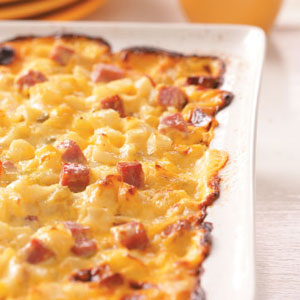Are you ready for the next challenge?! This month’s challenge is called the “Meal Frequency Challenge”. There is no question we all lead extremely busy lives which many times is the cause of missed meals. When we eat very little through out the day we tend to over eat at the end of the day. This is bad because we are typically less active in the evening which means our bodies will be storing most of those calories as fat 🙁
Our last challenge was the Breakfast and Water Challenge. Everyone should fully understand the importance of jump starting the metabolism by eating breakfast. It’s even more important to keep the metabolism running at a steady pace so we can avoid starvation mode and our bodies hoarding calories. The best way to do this by eating small meals every 2-3 hours. I understand at first this will seem impossible, inconvenient and maybe even a little counter-productive depending on what your goals are. For some of you the challenge will be for you to consume more calories, more frequently throughout the day. For others the challenge will be to simply split up your calories into 5-6 small meals instead of 2-3 big meals. If you choose to take this challenge on, one of the first things you will notice is how much easier it will be for you to make healthier food selections. Why? You won’t let your body get to the point of starvation so you will be able to make food decisions with your brain instead of your stomach.
The challenge will work like this. For every meal you eat you will earn 1 point. For every meal that includes fried food and for every dessert consumed you will lose 1 point. I will provide a list of foods/meals/snacks to give you an idea of what your small meals will look like. I will also provide some simple guidelines to follow when choosing your food. The challenge will begin on 7-16-12 (in 1 week) and end on 8-13-12. You do not need to sign up for the challenge. The teams will be split up according to properties and departments. Designate one person on your team to keep track of your points. At the end of each week I will send an email out requesting a tally of your teams points for the week.
Here are some great examples of food to choose from for the “Meal Frequency” challenge. If you have specific questions regarding a certain food or portion size, please email me 🙂 Do your best to have a healthy combo of carbs, protein and fat every time you eat. Everyone’s combination will be slightly different depending on what your trying to accomplish but if you’re not sure what a healthy combo looks like, here’s an example: 40% protein, 35% carbs and 25% fat. I’m not going to suggest you have to start counting calories (although it can be helpful) but here is an example of a daily calorie breakdown based on a 2000 calorie diet:
Breakfast = 500cal Breakfast = 400 cal
Snack = 250 cal Snack = 400 cal
Lunch = 500 cal or Lunch = 400 cal
Snack = 250 cal Snack = 400 cal
Dinner = 500 cal Dinner = 400 cal
Click the link below if you are interested in calculating how many calories you personally need:
http://grapevine.mckinley.com/?p=206
You choose what will work best for you. The link below has the list of breakfast options from last month and I still recommend starting your day with one of those options.
http://grapevine.mckinley.com/?p=757
To be successful with eating smaller meals more frequently it helps to prepare some meals ahead of time (Sunday’s are usually a great day for this), or make a larger portion for dinner so you can take the left overs to work the next day.
Try these! You can find the recipes on the Grapevine under “Cooking Smart”:
~ tuna salad, chicken salad, mini meat loafs (made in muffin tins), rice, cheddar and spinach pie (made in muffin tins), no bake energy bars
Here are some other foods you might want to keep at work:
-carrot sticks, celery sticks, cucumbers, peppers, Reduced fats wheat thins or triscuts, baked pita chips, sliced tomatoes, Rice cakes or crackers, Dry Cereal (whole grain or gluten free), Oatmeal, Hummus, 1/3 less fat cream cheese, low fat string cheese, low fat salad dressing, lunch meat (turkey, ham, chicken…great source of protein), Greek yogurt, Almonds, pastachios, peanuts, sunflower seeds, chia seeds, Natural peanut butter, Apples, Pears, Plums, Grapes, watermelon, blueberries, oranges, bananas, Hard boiled eggs, soup (avoid the cream based soups)
If you nee some guidance when it comes to dining out, click the link below:
http://grapevine.mckinley.com/?p=557
If you frequent fast food restaurants, I encourage you to check out the nutrition facts on line of the foods you order. If it exceeds the amount of calories you should be consuming at one time try choosing once of the healthier options.


